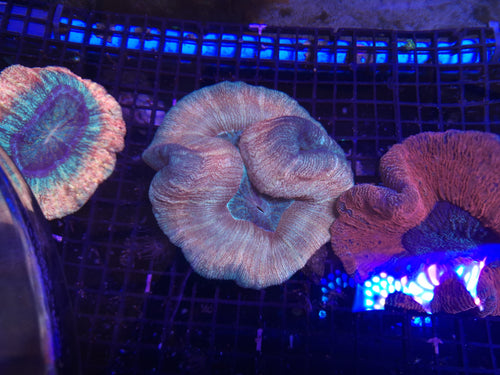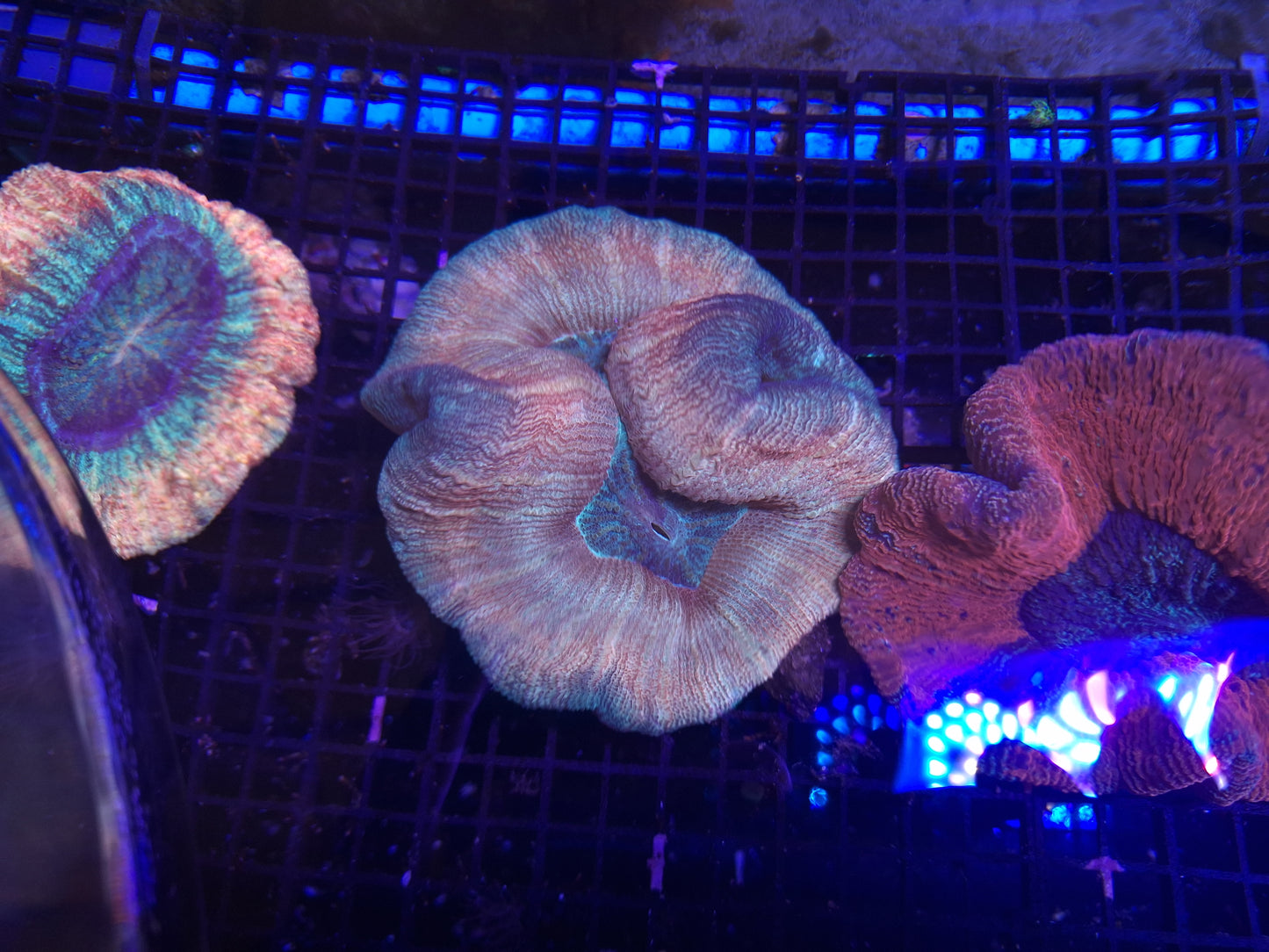Trachyphyllia Brain 1
Trachyphyllia Brain 1
check_circle Fast Shipping
check_circle Quality Products
check_circle Affordable Price
Reach out to us on ''available to order'' items via WhatsApp or email
Low stock: 1 left
Couldn't load pickup availability

Trachyphyllia Brain 1
package_2
Product Description
Product Description
Trachyphyllia Coral (Open Brain Coral)
Scientific Name: Trachyphyllia geoffroyi
Common Names: Open Brain Coral, Trachy Coral, Folded Brain Coral
🪸 Description
The Trachyphyllia, or Open Brain Coral, is a large-polyp stony (LPS) coral admired for its vivid colouration, plump fleshy tissue, and mesmerizing folds that give it a true “brain-like” appearance.
Colors can range from deep reds, greens, oranges, and purples, often with striking iridescent patterns under blue light.
Each coral is a single large polyp that expands beautifully when healthy, making it a true centerpiece for reef aquariums. Its soft, flowing movement under gentle current adds natural texture and motion to the tank.
⚙️ Care Level: Moderate
Trachyphyllia corals are fairly hardy once established but require stable water parameters and gentle handling. They are best suited to mature, nutrient-balanced systems.
💡 Lighting
-
Low to Moderate (PAR 50–100)
-
Too much light can cause bleaching or tissue recession.
-
Prefers softer, indirect light and should be acclimated slowly to new lighting conditions.
🌊 Water Flow
-
Low, gentle flow
-
Prevents debris buildup without damaging or irritating the fleshy tissue.
-
Avoid strong or direct current.
🧪 Water Parameters
| Parameter | Ideal Range |
|---|---|
| Temperature | 24–26°C (75–79°F) |
| Salinity | 1.025–1.026 |
| pH | 8.1–8.4 |
| Alkalinity | 8–9.5 dKH |
| Calcium | 420–450 ppm |
| Magnesium | 1300–1400 ppm |
| Nitrate | 2–10 ppm |
| Phosphate | 0.03–0.08 ppm |
🍤 Feeding
-
Photosynthetic, but benefits from target feeding 1–2 times weekly.
-
Offer Mysis shrimp, brine shrimp, or coral pellets when tentacles are extended (usually after lights out or when food is detected).
-
Feeding helps enhance color, growth, and tissue fullness.
🪸 Placement
-
Best placed on the sand bed or a flat, protected area of rock.
-
Keep away from sharp rocks or aggressive corals to avoid tissue damage.
-
Allow space for full expansion — a healthy Trachy can inflate to several times its skeleton size.
⚠️ Notes
-
Sensitive to rapid changes in salinity or alkalinity.
-
Avoid placing near stinging corals or in direct flow zones.
-
Handle gently — the fleshy tissue tears easily if lifted by the polyp instead of the skeleton.


